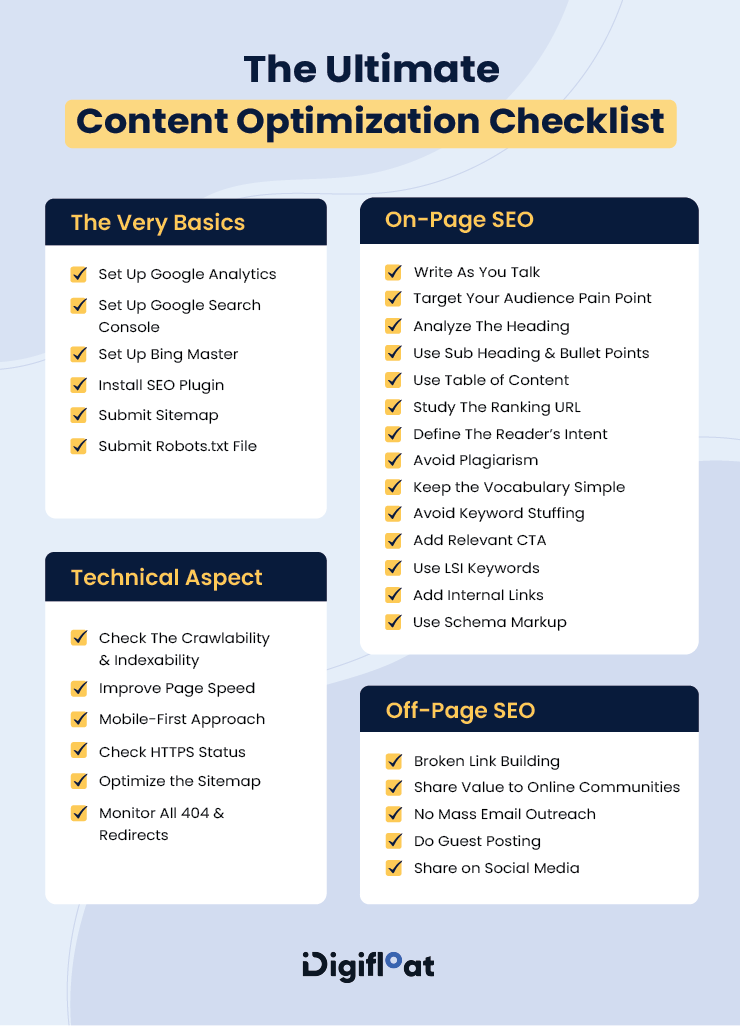As a seasoned content strategist and online marketing expert specializing in SEO-optimized blog content creation, my goal is to empower new blog contributors with clear, actionable guidance on best practices for creating high-quality, search engine-friendly content. My target audience consists of aspiring writers, small business owners, and entrepreneurs who are looking to establish their voice in the digital space while improving their online visibility. I provide insights into keyword research, on-page optimization, content structure, and user experience, all aimed at helping them rank higher on Google and drive organic traffic.
What Is Done Right

✅ SEO Score: 8/10
The article has a solid foundation but could benefit from several improvements to reach its full potential.
✅ Clear and Concise Headings
The article uses descriptive headings that help readers understand the flow of information. This aligns with SEO best practices, as it improves readability and helps search engines identify key topics.
✅ Keyword Usage
The main keywords—such as "SEO," "blog content," and "search engine optimization"—are naturally integrated throughout the text. This helps with relevance and can improve rankings if used correctly.
✅ Meta Description
The meta description is well-crafted and includes the primary keyword. It provides a clear summary of the article’s purpose, which can increase click-through rates from search results.
✅ Internal Linking
There are internal links to other relevant pages on the website. This helps distribute page authority and improves user navigation, both of which are important for SEO.
✅ Mobile-Friendly Design
The layout is responsive and adapts well to different screen sizes, ensuring a positive user experience across devices. This is crucial since Google prioritizes mobile-first indexing.
✅ Content Length
The article is sufficiently long to cover the topic in depth, which is beneficial for SEO as longer content tends to perform better in search results.
✅ Image Alt Text
Images are accompanied by descriptive alt text, which not only improves accessibility but also helps search engines understand the context of the images.
What Is Done Wrong
❌ Missing Title Tag Optimization
The title tag is not optimized for search engines. A strong title should include the primary keyword and be compelling enough to encourage clicks. For example, instead of "Optimizing Blog Content for SEO," a better title might be "How to Optimize Your Blog Content for Better SEO Rankings."
❌ Lack of Schema Markup
The article does not use schema markup, which can enhance the way content appears in search results. Implementing structured data can lead to rich snippets, which may increase visibility and click-through rates.
❌ Insufficient Keyword Density
While the main keywords are present, they are not distributed evenly throughout the content. A more strategic placement of keywords can help improve relevance without appearing forced or spammy.
❌ No Backlink Strategy
The article lacks any mention of backlinks or external sources. Including authoritative backlinks can add credibility and improve the article’s trustworthiness in the eyes of search engines.
❌ Limited Use of LSI Keywords
Latent Semantic Indexing (LSI) keywords are not included, which could help search engines understand the context of the content better. Incorporating related terms like "on-page SEO," "content strategy," and "keyword research" would enhance the article's relevance.
❌ No Call-to-Action (CTA)
There is no clear CTA encouraging readers to take action, such as subscribing to a newsletter or sharing the article. CTAs can improve engagement and help with conversion rates.
❌ Poor Internal Link Structure
While there are internal links, they are not organized in a logical hierarchy. A more structured approach would make it easier for users to navigate the site and for search engines to crawl it effectively.
❌ No User Intent Analysis
The article does not address the user intent behind the topic. Understanding what readers are looking for—whether it's a tutorial, a guide, or an overview—can help tailor the content to meet those expectations.
Recommendations for Improvement
To further optimize this article for SEO, consider implementing the following changes:
- Revise the Title Tag: Ensure it includes the primary keyword and is engaging.
- Add Schema Markup: Use structured data to enhance the appearance of the content in search results.
- Distribute Keywords Strategically: Ensure that the main and related keywords are spread throughout the content.
- Incorporate LSI Keywords: Add related terms to improve context and relevance.
- Include a Call-to-Action: Encourage readers to engage with the content or share it.
- Improve Internal Linking: Organize links in a way that guides users through the site and supports SEO.
- Analyze User Intent: Understand what readers are seeking and tailor the content accordingly.
- Add External Backlinks: Include links to reputable sources to build credibility and authority.
By addressing these areas, the article can significantly improve its chances of ranking higher on Google and providing greater value to readers.